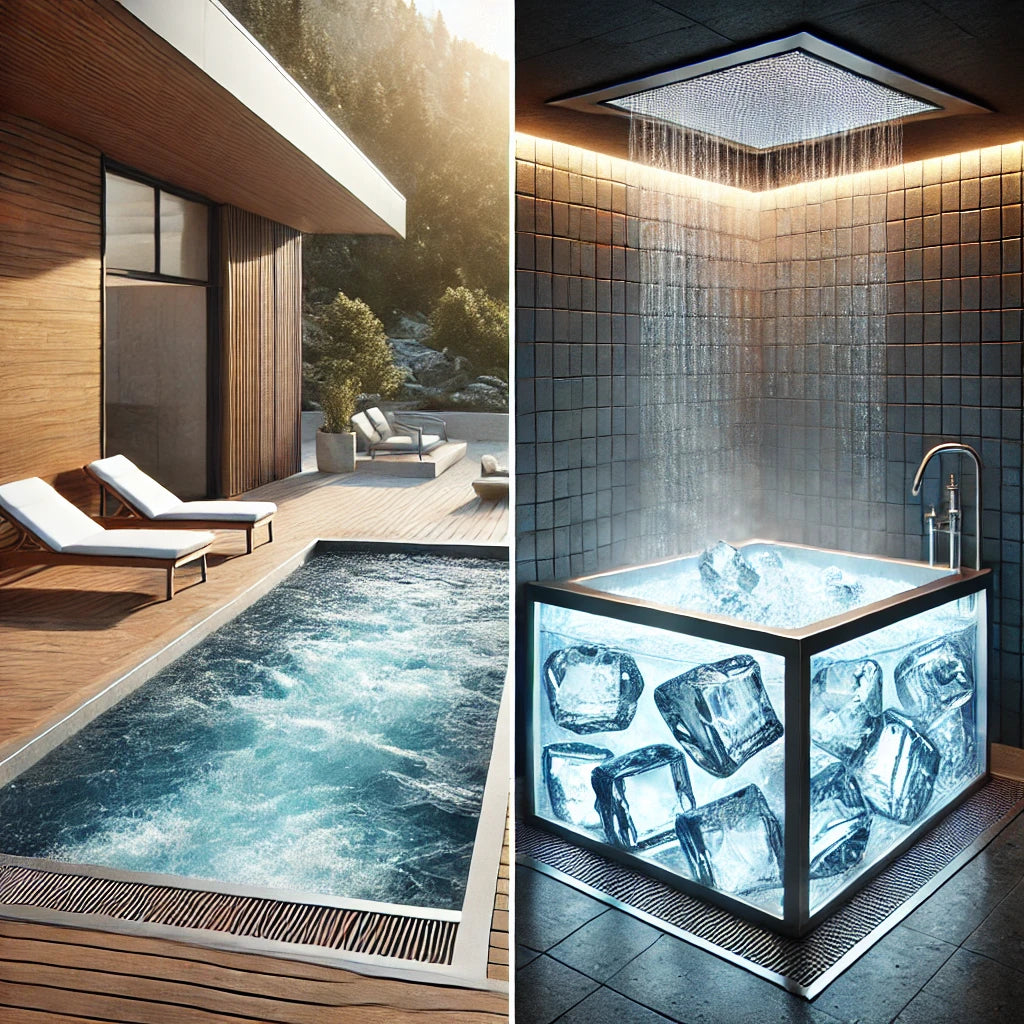Cold water therapy has gained significant attention in recent years for its numerous health benefits, including enhanced recovery, improved circulation, and boosted mental clarity. Two popular methods of cold water therapy are cold plunges and ice baths. While they may seem similar, there are key differences between the two that can affect their effectiveness and the user experience. This article explores the distinctions between cold plunges and ice baths, helping you decide which option is best suited for your needs.
What Is a Cold Plunge?
A cold plunge typically refers to a pool or tub of cold water, usually kept at a temperature between 50 to 60 degrees Fahrenheit (10 to 15 degrees Celsius). Cold plunges are often found in spas, wellness centers, and athletic facilities as part of a contrast therapy regimen, where users alternate between hot and cold environments.
Key Features of a Cold Plunge
- Temperature Control: Cold plunges are often equipped with temperature control systems that maintain a consistent water temperature, making them ideal for longer sessions.
- Size and Depth: Cold plunge pools are usually larger and deeper than traditional bathtubs, allowing for full-body immersion. This makes them suitable for people of all sizes.
- Filtration Systems: Many cold plunge pools include filtration systems that keep the water clean and free of debris, which is especially important in shared or commercial settings.
Common Uses for Cold Plunges
Cold plunges are commonly used in conjunction with saunas or hot tubs as part of contrast therapy. Athletes often use cold plunges after intense training sessions to reduce muscle soreness and inflammation. Cold plunges are also popular in wellness and spa settings for their invigorating effects and benefits to circulation and skin health.
What Is an Ice Bath?
An ice bath involves filling a tub with cold water and ice, typically achieving a temperature range of 50 to 59 degrees Fahrenheit (10 to 15 degrees Celsius). Ice baths are often used by athletes and fitness enthusiasts for recovery purposes after strenuous exercise.
Key Features of an Ice Bath
- Cold Intensity: The presence of ice in the water makes ice baths extremely cold, providing a more intense experience than a cold plunge.
- Accessibility: Ice baths can be easily set up at home using a bathtub, making them accessible to anyone with a tub and access to ice.
- Duration: Ice baths are usually shorter in duration due to the intense cold, with most sessions lasting between 5 to 15 minutes.
Common Uses for Ice Baths
Ice baths are widely used by athletes for recovery, particularly after activities that cause significant muscle strain or injury. The cold temperature helps reduce inflammation, flush out metabolic waste, and relieve pain. Ice baths are also used in mental toughness training due to the extreme cold and the mental discipline required to endure it.
Comparing Cold Plunge and Ice Bath Benefits
While both cold plunges and ice baths offer similar benefits, there are some key differences in how they affect the body and which one might be better for you.
Recovery and Inflammation Reduction
Both cold plunges and ice baths are effective at reducing inflammation and muscle soreness. However, ice baths may provide more immediate relief due to the intense cold, which constricts blood vessels and reduces swelling faster. Cold plunges, on the other hand, are better for sustained recovery over longer sessions.
Circulation and Cardiovascular Health
Cold plunges are generally better for enhancing circulation and cardiovascular health. The consistent cold temperature allows for longer immersion times, which promotes better blood flow and cardiovascular function. The larger size of a cold plunge pool also means you can move around and engage in light exercise, further improving circulation.
Mental Toughness and Stress Relief
Ice baths are often favored for building mental toughness and resilience. The shock of the cold requires intense focus and mental discipline, which can help improve stress management skills. Cold plunges, while still mentally challenging, provide a more gradual and less intense cold exposure, making them better suited for relaxation and stress relief.
Cost and Accessibility Considerations
When deciding between a cold plunge and an ice bath, cost and accessibility are important factors to consider.
Cold Plunge Costs
Cold plunge pools can be expensive, particularly if you invest in a model with advanced temperature control and filtration systems. They also require more space and regular maintenance, making them better suited for commercial use or dedicated wellness spaces.
Ice Bath Costs
Ice baths are more affordable and accessible, as they can be set up using a standard bathtub or portable tub and a few bags of ice. This makes them an excellent option for individuals who want to incorporate cold therapy into their routine without significant upfront investment.
Which Is Right for You?
Choosing between a cold plunge and an ice bath depends on your personal preferences, goals, and budget.
Opt for a Cold Plunge If:
- You have the space and budget for a dedicated cold plunge pool.
- You want a consistent, controlled cold exposure for longer sessions.
- You’re focused on improving circulation, cardiovascular health, and sustained recovery.
Opt for an Ice Bath If:
- You prefer a more intense cold therapy experience.
- You’re looking for a cost-effective and easily accessible solution.
- You’re focused on quick recovery, inflammation reduction, and mental toughness training.
Conclusion
Both cold plunges and ice baths offer significant health benefits, from enhanced recovery and reduced inflammation to improved circulation and mental resilience. The choice between the two ultimately comes down to your individual needs and circumstances.
If you’re seeking a consistent, controlled cold exposure experience with longer immersion times, a cold plunge may be the better option. However, if you’re looking for a more intense, cost-effective solution that you can easily set up at home, an ice bath could be the way to go.
Whichever option you choose, incorporating cold water therapy into your wellness routine can lead to improved physical and mental health, making it a valuable practice for anyone committed to their well-being.

